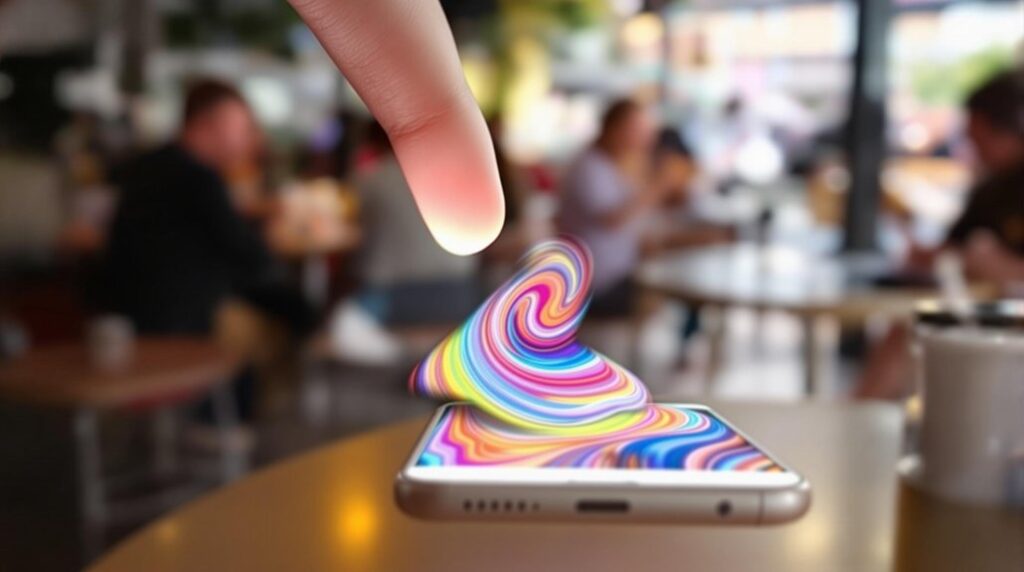The "Accept Friend" function on Snapchat is an essential tool for managing friend requests, ensuring dynamic interaction while upholding privacy. By accepting a request, users enable the mutual exchange of snaps, messages, and profiles, thereby enhancing their social experience within a trusted network. The process is streamlined through the "Added Me" section, providing an organized method to monitor pending requests. This feature not only affirms mutual agreement between contacts but also filters out unwanted content, maintaining a curated connection list aligned with user preferences. Acceptance paves the way for enriched social interactions and meaningful engagement on the platform.
Key Takeaways
- Accepting a friend request on Snapchat enables mutual interaction, including snaps, messages, and story viewing.
- It enhances privacy control by allowing users to manage who can access their content.
- Acceptance helps reduce unwanted content by curating a trusted list of contacts.
- Users receive notifications confirming mutual friendship upon accepting requests.
- Accepted friends gain visibility into each other's activities, enriching user engagement.
Understanding Accept Friend
Understanding the "Accept Friend" feature on Snapchat is vital for maneuvering the platform's social dynamics. This feature plays a significant role in the friend request etiquette that users must navigate. Upon receiving a friend request, users can either accept or ignore it, reflecting their social priorities and comfort levels within the app.
The decision to accept a request should consider a user's desire to engage with new content and expand their network, while also maintaining personal boundaries and privacy.
Snapchat's design promotes user engagement strategies by facilitating interactions once a friend request is accepted. Both parties gain the ability to exchange snaps, messages, and view each other's stories, thereby enhancing their engagement on the platform.
The "Added Me" section in the chat tab simplifies the management of incoming requests, streamlining the user experience. In addition, accepting a friend request sends an automatic notification to the sender, affirming the establishment of a mutual friendship.
Privacy settings are integral to the "Accept Friend" process, allowing users to control who can send requests and view their content. This guarantees that friend request etiquette is respected, while simultaneously fostering a secure and tailored social experience on Snapchat.
Importance of Accepting Requests
Accepting friend requests on Snapchat is essential for fostering mutual agreement, as it not only allows users to initiate meaningful interactions but also guarantees that both parties consent to sharing content.
This feature enhances privacy control by allowing users to carefully curate their audience, providing a safeguard against unsolicited content.
Additionally, by prioritizing consent and privacy, Snapchat differentiates itself from other social networks, offering a more personalized and secure user experience.
Mutual Agreement Benefits
While traversing the digital landscape, acknowledging a friend request on Snapchat can greatly enhance the user experience by fostering a reciprocal connection. This mutual agreement to connect is pivotal in shaping the friendship dynamics integral to the platform. By accepting a request, users open a world of connection benefits, enabling seamless sharing of snaps, stories, and messages. This fosters a vibrant digital friendship, where shared interests can be pursued and maintained with ease.
The acceptance of a friend request not only signifies consent to engage but also provides full visibility into each other's Snapchat activity. This includes the ability to view Snap Map locations and Snapchat scores, thereby enriching the interaction with real-time updates and insights. Such transparency enhances the depth of user engagement, allowing for dynamic interactions that are both meaningful and enjoyable.
Moreover, acceptance can lead to receiving Charms that reflect the relationship's nature and engagement level, adding a playful element to the connection. This feature guarantees that all interactions are consensual, thereby preventing unsolicited content from non-friends.
Ultimately, acknowledging a friend request on Snapchat catalyzes a robust social connection, facilitating a platform where relationships can thrive.
Enhanced Privacy Control
Maneuvering through the intricacies of Snapchat's privacy settings is essential for users who prioritize personal security and control over their digital interactions. Accepting friend requests plays a pivotal role in enhancing privacy control. By doing so, users determine who gains access to their snaps and stories, guaranteeing that only trusted individuals are privy to personal content.
This friend request etiquette dictates that privacy is respected, as accepting a friend is a mutual agreement that enhances security and trust within the platform.
Snapchat's unique approach empowers users to manage connections actively, which is a distinguishing factor from other social networks. Users are encouraged to regularly review and accept requests, facilitating a curated friends list that aligns with their preferences and comfort levels. This proactive management prevents unsolicited content access and supports a tailored social experience.
Key benefits of accepting friend requests on Snapchat include:
- Controlled access: Determines who can view your stories and send snaps.
- Enhanced security: Guarantees mutual agreement and trust in digital interactions.
- Increased engagement: Enables exchange of snaps and messages with chosen contacts.
- Curated connections: Maintains a friends list aligned with personal preferences.
Reducing Unwanted Content
Steering through the landscape of Snapchat's privacy settings marks a notable stride toward personal security, where the aspect of reducing unwanted content becomes paramount. Accepting friend requests on Snapchat is an effective method of spam reduction, allowing users to control who sends snaps and views their stories. This process acts as an essential content filtering mechanism that provides a personal shield against unsolicited messages and spam from unknown individuals.
By curating a list of known contacts, users minimize their exposure to irrelevant or inappropriate content, thereby fostering a safer and more enjoyable social experience. The mutual agreement formed by accepting requests not only enhances user engagement but also guarantees that interactions remain within the boundaries of chosen connections. This limits the risk of encountering harmful content, consequently maintaining a secure digital environment.
Regularly reviewing and managing friend requests is vital for sustaining a curated friends list that aligns with one's privacy preferences. Snapchat's unique friend request system empowers users to create a personalized interaction space, greatly reducing the likelihood of receiving unwanted communications.
This strategic approach to managing connections underscores the importance of accepting requests, promoting a controlled and secure online presence.
Steps to Accept Requests
To efficiently manage your social interactions on Snapchat, it is essential to understand the steps to accept friend requests. Steering through the friend request process is straightforward with a few app navigation tips.
Start by opening the Snapchat app and swiping right from the camera screen to access your friends list. Pending friend requests are conveniently displayed at the top, highlighted with a blue label to indicate they await your acceptance. By tapping on the sender's name, you can view available options and proceed by tapping the "Accept" button to finalize the connection.
For those who may have missed the initial notification, Snapchat offers a seamless way to revisit pending requests. Head to the "Added Me" section within the chat tab, where you can review and accept any outstanding friend requests. This guarantees you never miss an opportunity to connect with others.
Here's a quick recap of the steps:
- Open Snapchat and swipe right to access the friends list.
- Look for requests marked with a blue label at the top.
- Tap on the sender's name and select "Accept."
- Use the "Added Me" section for missed requests.
Post-Acceptance Changes
Upon accepting a friend request on Snapchat, users experience a significant enhancement in interaction capabilities, with seamless exchange of snaps and messages becoming possible.
This acceptance not only facilitates direct communication but also grants mutual access to each other's Snapchat stories, enriching the storytelling aspect of the platform.
Additionally, enhanced visibility into each other's activities, including Snap Map locations and Bitmoji interactions, creates a more engaging and personalized social experience.
Enhanced User Interaction
Accepting a friend request on Snapchat greatly improves user interaction by revealing a suite of engaging features designed to amplify connectivity and personalization. This acceptance paves the way for interactive features that cater to personalized experiences, fostering a deeper connection between users.
By exchanging snaps and messages, users communicate directly, allowing for a more intimate and responsive dialogue. This real-time interaction not only strengthens friendships but also cultivates a dynamic Snapchat environment.
Furthermore, acceptance reveals mutual visibility on the Snap Map, providing a real-time glimpse into each other's locations, which can enrich social interactions and spur spontaneous meet-ups. The integration of Bitmoji characters adds a layer of personalization, making exchanges more vibrant and reflective of individual personalities.
This character-driven interaction facilitates a unique communication style that is both visually appealing and contextually relevant.
In addition to these features:
- Snapchat Scores: Engage in friendly competition by tracking each other's Snapchat activity.
- Bitmoji Integration: Personalize interactions with customized avatars.
- Real-Time Snap Map Visibility: See each other's locations for better coordination.
- Direct Messaging: Foster immediate and personalized communication.
These elements collectively enhance the Snapchat experience, making social interactions more meaningful and tailored.
Story and Snap Visibility
With the acceptance of a friend request on Snapchat, users gain access to the ability to view each other's stories, greatly enhancing their social interaction on the platform. This feature of story sharing allows friends to stay updated on each other's daily activities, fostering a sense of closeness and engagement.
The visibility of stories not only promotes continuous snap engagement but also encourages users to share more creatively curated content, knowing their friends are part of their audience.
In addition to story sharing, accepted friends can directly send and receive snaps, paving the way for more personalized communication experiences. This direct snap engagement is a cornerstone of Snapchat's appeal, facilitating immediate and intimate exchanges.
The visibility of each other's Snapchat score further adds a layer of engagement, offering a glimpse into a user's activity and interaction level on the app.
Additionally, both users can view each other's Bitmoji characters, adding a personalized touch to their interactions.
The acceptance also enables location sharing through the Snap Map, should both parties choose to activate this feature, allowing friends to see each other's whereabouts in real-time, thereby enriching their connection on Snapchat.
Managing Friend Connections
Steering through the digital landscape of Snapchat involves strategically managing friend connections to guarantee a secure and enjoyable social experience. At the heart of this strategy is understanding friend request etiquette and respecting social media boundaries.
Users should regularly review incoming friend requests, which appear with a blue label in the Added Me section, to maintain control over their social interactions. Accepting these requests allows users to exchange snaps, messages, and view each other's stories, fostering enhanced engagement and connectivity.
Snapchat users, particularly those aged 18-34, spend an average of 30 minutes daily engaging with brand content, making it vital to curate a meaningful friends list. However, ignoring requests from unfamiliar or untrustworthy sources protects one's privacy and preserves the integrity of their social network.
Effective management of friend connections also involves periodic assessments of the friends list. This guarantees that all contacts align with individual preferences and contribute positively to the user's social experience.
Additionally, users should consistently adjust their privacy settings to determine who can interact with them and access their activity. This proactive approach to managing connections is essential to maintaining a curated and secure digital environment.
- Review friend requests: Check the Added Me section regularly.
- Accept or ignore: Balance engagement with security.
- Curate your friends list: Align contacts with personal preferences.
- Adjust privacy settings: Control contact and visibility options.
Privacy and Friend Requests
Steering through the intricacies of privacy and friend requests on Snapchat is essential for users aiming to maintain control over their digital presence. Accepting a friend request is not merely a social gesture; it is a pivotal decision that influences who can send snaps and view personal stories. This capability underscores the importance of friend request etiquette, as it allows users to selectively curate their audience and interactions, thereby enhancing their privacy.
A thorough privacy settings overview reveals that Snapchat provides users with robust tools to manage these requests. By maneuvering to the "Added Me" section in the chat tab, users can review pending requests, choosing to accept or decline them with ease. This feature guarantees that users are not inundated with unwanted interactions or spam from unknown contacts.
Additionally, adjusting privacy settings can limit who can contact them and view their profile, offering an extra layer of control. Accepting a request establishes mutual visibility, fostering a more engaged social experience.
However, users should approach this with caution, especially with unfamiliar contacts, to maintain the integrity of their digital environment and safeguard personal interactions.
Frequently Asked Questions
What Happens When You Accept Someone on Snapchat?
When you accept a friend request on Snapchat, your privacy settings adapt to allow mutual sharing of snaps, messages, and stories. This acceptance enhances communication, enabling visibility of each other's Snapchat scores and Bitmoji characters, fostering personal interactions.
How Do You Know if Someone Unadded You on Snapchat?
Snapchat friend removal can be identified by the absence of the individual's name from your friends list, lack of unadded notifications, inability to send messages, and seeing an "Add Friend" option when searching their profile.
What Happens When I Remove a Friend on Snapchat?
When you initiate friend removal on Snapchat, it enhances your privacy settings by severing mutual access to snaps, stories, and chats. The removed individual won't receive notifications, yet retains visibility of your profile, necessitating a new friend request to reconnect.
What Does Accept Friend Mean on Snapchat Reddit?
On Reddit, discussions about "Accept Friend" on Snapchat often focus on the platform's friend request system, emphasizing its role in friend privacy settings. Accepting requests enables shared content access while underscoring the importance of managing connections judiciously.
Conclusion
The process of accepting friend requests on Snapchat involves several vital steps that greatly impact user interaction and privacy settings. Understanding the importance of accepting these requests is essential for managing social connections effectively. Once a request is accepted, changes occur in user engagement and visibility, influencing how connections are maintained. Proper management of friend connections enhances the user experience, while attention to privacy settings guarantees a secure and controlled social environment. Users must remain vigilant in steering through these dynamics.




